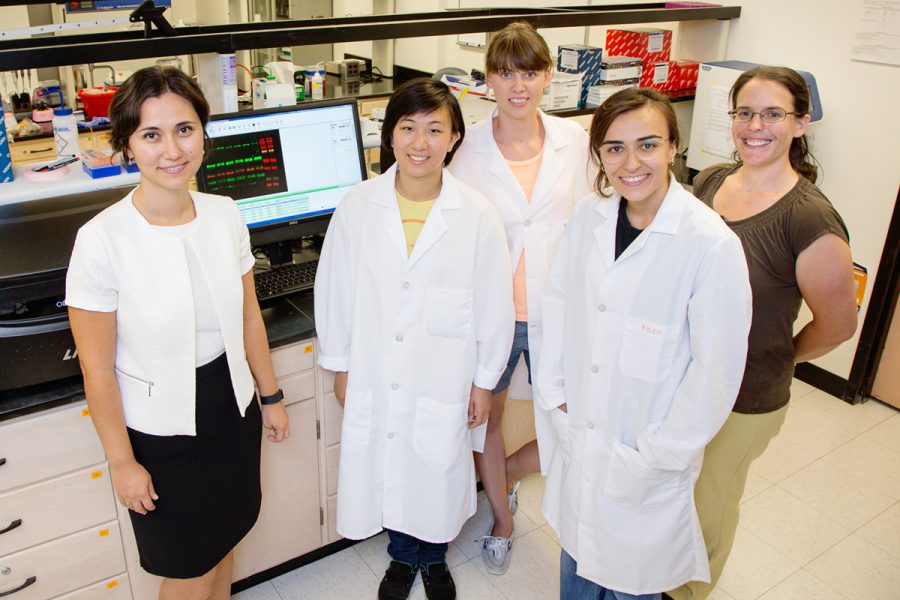University researchers find drug combination to overcome cancer therapy resistance
from left: Prof. Zeynep Madak-Erdogan (food science and human nutrition); Karen Chen, graduate student; Kinga Wrobel, graduate student; Eylem Kulkoyluoglu, graduate student; Rebecca Smith, professor of epidemiology
October 19, 2016
A researcher at the University recently made a cancer fighting break through.
Zeynep Madak-Erdogan, assistant professor in food science and human nutrition, found a drug combination that can help fight breast cancer. More specifically, the drug combination can help battle estrogen receptor-positive tumors that are found in breast cancer.
Estrogen receptors, or ERs, are a group of proteins in cells that are activated by estrogen. When testing for breast cancer, a patient finds out if their cancer cells are either ER-positive or ER-negative. Treatment is then determined based on this diagnosis.
Tamoxifen is a cancer-fighting drug that is commonly used to treat ER-positive tumors. It has various negative and positive reactions from different patients. However, combining it with the drug selinexor can slow down some of those reactions.
“We started with a hypothesis based on our previous work,” Madak-Erdogan said. “Then, (we) used publicly available datasets from databases and finally tested our hypothesis in vitro and in vivo systems.”
Get The Daily Illini in your inbox!
The data showed that targeting ER-positive cancer cells with tamoxifen and selinexor would benefit the patient. Delaying, or in some cases overcoming, tamoxifen resistance can help some patients possibly stop chemotherapy, said Madak-Erdogan.
“They know that tamoxifen works great for a lot of people, but not everyone,” said research advocate, Jamie Holloway, who was previously diagnosed with triple negative breast cancer. “Taking an additional drug (selinexor) that can increase the tamoxifen’s ability to stave off recurrence would make a significant impact on many patients.”
Reaching out to Holloway helped her find a creative process to improve survival for cancer patients.
“I’m very proud that I can work with an investigator at my Alma Mater towards making a difference in the lives of women and men diagnosed with breast cancer,” Holloway said.
Using this drug to slow down the rates of ER-positive breast cancer is just the start of the cancer fighting process.
“Drug development is a long and arduous road,” Holloway said. “The development of an agent that can improve the efficacy of a treatment that is currently the standard of care will certainly change the way breast cancer is treated.”
And it doesn’t just stop at breast cancer. Madak-Erdogan said that the drug, selinexor, is currently being tested in clinical trials for therapy resistant leukemias and prostate cancers.
A previous version of this story named Jamie Holloway as Paige Holloway. The drug itself does not help battle estrogen receptor-positive tumors it is the drug combination. The headline has been changed to more appropriately reflect the research. The researchers did not discover the drug but discovered the drug’s use in combination to overcome therapy resistance. The Daily Illini regrets the errors.







